History of Hell's Half Acre
HISTORY OF HELL'S HALF ACRE
Hell's Half Acre was a rough and rowdy precinct of Fort Worth, Texas originating during the early to mid 1870s in the Old Wild West. The Chisholm Trail and Texas and Pacific Railway in 1876 launched a local economic boom, and Fort Worth was soon the favorite destination for hundreds of cowboys, buffalo hunters, railroad workers, and freighters eager to wash off the trail dust and enjoy themselves. The economic driving force lead to the progressive development of the rambunctious red-light district. The half acre block was originally designated from tenth street to fifteenth street while intersecting with Houston street, Main street, and Rusk street with Throckmorton and Calhoun streets established as boundaries.
To meet the demand, a large number of saloons, boarding houses, brothels, gambling parlors and hotels, as well as a small assortment of mercantile businesses, opened between the Courthouse Square and the railroad depot. Illegal activities in Hell’s Half Acre were tolerated by city officials because of their importance to the town’s economy. The district prospered in the 1880s and added to Fort Worth’s growing reputation as a rowdy frontier town, and even caught the glimpse of such Old West personalities as Bat Masterson, Butch Cassidy, Doc Holliday, Etta Place, Luke Short, Sam Bass, Sundance Kid, and Wyatt Earp.
As the importance of Fort Worth as a crossroads and city grew, so did Hell’s Half Acre. The original 22,000-square-foot area began to spread, and eventually covered over two and a half acres. With many families moving into the area in the early 1900’s, a campaign was born to clean up the city, and word began to spread that Fort Worth’s image was changing to push rowdy cowboys and gamblers out of town.
Fort Worth Democrat Newspaper of April 10, 1878:
The Cowboys’ Tear.
They Raise Merry Cain at the Waco Tap.
Thirty or Forty Shots Fired. And Nobody Hurt.
A dozen or more of the festive cowboys, imbued with the spirit of pure devilishment, mounted their horses, and as is their custom, visited the several dance houses, caroused and danced with the “girls,” drank when they felt so disposed, and continued their career without much trouble until round about 1 o’clock, when they all congregated at the Red Light, and after mounting their horses, each drew his six-shooter, and blazing away in the air, fired twenty or thirty shots, at the same time putting spurs to their horses, they made tracks for the depot.
View more historical images and facts below.
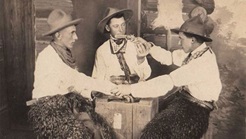 Gamblers in Texas, circa early 1900s
Gamblers in Texas, circa early 1900s
Gambling became a major business in the late 1800s and early 1900s, and Texas cowboys were betting on card games, horse races, prize fights and backgammon. You could tell where many cowboys were from depending on their style of boot or hat, heavy or light chaps, big or small spurs, etc. Today, the cowboy hat and cowboy boots are still very popular in Fort Worth — though gambling is not permitted.
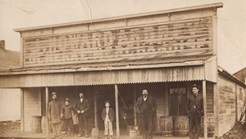 The General Store, circa 1910
The General Store, circa 1910
During the late 1800’s and early 1900’s, general stores were usually the first business establishments to be built in a town. They were known as the gathering place for townspeople, farmers and cattlemen to buy food, gear, or items in bulk for long trips on the trail. The general store was often the town's post office, lunch stop, and place to gather for all the latest news.
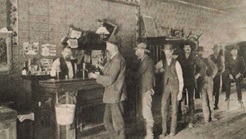 Parlor Saloon, circa early 1900s
Parlor Saloon, circa early 1900s
Saloons conjure up images of gunfights, heavy drinking, dancing girls, and brawling cowboys and gunfights. The Parlor Saloon was one of Fort Worth’s original saloons during Hell’s Half Acre. You often saw long oak or mahogany wooden bars and barstools as you see in this photo. Today, bars offer live music, specialty menus and unique drinks, and many still feature the long, wooden bar style.
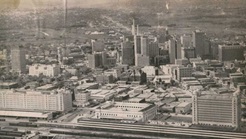 Fort Worth Skyline, circa 1930s
Fort Worth Skyline, circa 1930s
By the mid-nineteenth century, Fort Worth was becoming known for more than just Hell’s Half Acre, but a great place on the legendary Chisholm Trail. The railroad was making frequent stops, and the city started to adopt the nickname "Cowtown." The historic post office built in 1933 was designed by an architect to fit the Fort Worth look and feel. Families began to move into Fort Worth and city began cleaning up the southern half of downtown.
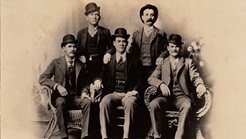 Hole in the Wall Gang
Hole in the Wall Gang
This is a photo of the main leaders of the Wild Bunch, some times known as the "Hole in the Wall Gang." Standing (from left to right): Bill Carver and Harry Longbaugh. Sitting: Harry Logan, Ben Kilpatrick and George Parker alias Butch Cassidy. These rowdy gunslingers were well-known around Hell's Half Acre in the early 1900s.

